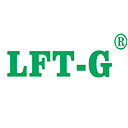neuer Blog
(1) Monofilament
Das Original bezieht sich auf eine kontinuierliche Einzelfaser, die von einer Spinndüse mit einem Loch gesponnen wird. In praktischen Anwendungen umfasst es jedoch häufig das Filament mit wenigen Löchern, das aus 3 bis 6 Einzelfasern besteht, die von einer Spinndüse mit 3 bis 6 Löchern gesponnen werden. Das grobe Kunstfaser-Monofilament (Durchmesser 0,08 ~ 2 mm) wird als Borste bezeichnet und zur Herstellung von Seilen, Bürsten, Netzbeuteln für den täglichen Gebrauch, Fischernetzen oder industriellen Filtertüchern verwendet. Aus dem feineren Polyamid-Monofilament werden transparente Damensocken oder andere feine Strickwaren hergestellt.
(2) Verbundseide
Ein Filament, das aus Dutzenden einzelner Fasern besteht. Komplexfasern aus Chemiefasern bestehen im Allgemeinen aus 8 bis 100 Einzelfasern. Die überwiegende Mehrheit der Stoffe besteht aus zusammengesetzter Seide. Dies liegt daran, dass eine zusammengesetzte Seide aus mehreren Einzelfasern nachgiebiger ist als eine einzelne Seide mit demselben Durchmesser.
(3) Vorhangdraht
Ein Seidenstreifen, der aus mehr als einhundert bis mehreren hundert Einzelfasern besteht und zur Herstellung von Reifencordgewebe verwendet wird, allgemein bekannt als Corddraht.
Das Produkt der Chemiefaser wird in wenige Zentimeter bis ein Dutzend Zentimeter lange Stücke geschnitten, diese Faserlänge wird Stapelfaser genannt. Je nach Schnittlänge können Stapelfasern in Baumwoll-Stapelfasern, Woll-Stapelfasern und mittellange Stapelfasern unterteilt werden.
(1) Baumwoll-Stapelfaser
Die Länge beträgt 25 bis 38 mm, die Faser ist fein (die lineare Dichte beträgt 1,3 bis 1,7 dtex), ähnlich wie Baumwollfasern, die hauptsächlich zum Mischen mit Baumwollfasern wie Polyester-Stapelfasern vom Baumwolltyp und Baumwollfasermischungen verwendet werden, um den resultierenden Stoff zu ergeben wird als „Poly-Baumwoll“-Gewebe bezeichnet.
(2) Haarstapelfaser
Länge von 70 bis 150 mm, grobe Fasern (lineare Dichte von 3,3 bis 7,7 dtex), ähnlich wie Wolle, hauptsächlich zum Mischen mit Wolle verwendet, z. B. Polyester-Stapelfasern vom Wolltyp und Wollmischung. Der resultierende Stoff wird „Wolle“ genannt Polyester"-Gewebe.
(3) mittellange Faser
Die Länge beträgt 51 ~ 76 mm, die Faserdicke liegt zwischen Baumwolltyp und Wolltyp (Liniendichte beträgt 2,2 ~ 3,3 dtex) und wird hauptsächlich zum Weben mittel- und langfaseriger Stoffe verwendet.
Stapelfasern können sowohl mit Naturfasern als auch mit anderen Chemiefasern gemischt werden, so dass die Mischgewebe gute Gesamteigenschaften aufweisen. Darüber hinaus kann es sich bei Kurzfasern auch um reines Spinnen handeln. Bei der Herstellung von Chemiefasern ist weltweit der Ausstoß an Stapelfasern höher als der an Filamentfasern. Entsprechend den Eigenschaften der Faser werden bei einigen Sorten (z. B. Nylon) Filamente hergestellt; Einige Sorten (z. B. Acrylfasern) produzieren hauptsächlich Kurzfasern; Einige Sorten, wie zum Beispiel Polyester, weisen ein ähnliches Verhältnis auf.
Grobe Details aus Seide mit grobem Querschnitt von geringer Festigkeit, großer Bruchdehnung, starker thermischer Schrumpfung, guter Färbung und einfacher Verarbeitung zur Alkalireduktion können diese Eigenschaften voll ausnutzen, um einzigartige Textileigenschaften zu entwickeln. Die physikalischen Eigenschaften von Seide mit groben Details hängen vom Durchmesserverhältnis der groben Details und anderen Faktoren ab. Im Allgemeinen weisen grobe Detailfilamente eine höhere Bruchdehnung und Schrumpfung in kochendem Wasser sowie eine geringere Bruchfestigkeit und Ausbeute auf. Aufgrund seiner starken Schrumpfungseigenschaft können grobe Detailfasern mit anderen Fasern gemischt werden, um heteroschrumpfende Mischfasern zu bilden. Darüber hinaus lässt sich der grobe Abschnitt grober Detailseide leicht verformen. Beim Web-, Färbe- und Veredelungsprozess sollte auf Probleme mit geringer Festigkeit geachtet werden. Die anfängliche Seide mit groben Details ist runde Seide. Mit der Entwicklung der Produktionstechnologie für Seide mit groben Details sind nach und nach einige spezielle Seiden mit groben Details aufgetaucht, wie etwa speziell geformte Seide mit groben Details, Seide mit gemischten Fasern und groben Details, mikroporöse Seide mit groben Details und feine Denier-Seide mit groben Details usw Sie haben entweder eine besondere Haptik und einen besonderen Stil oder eine besondere Absorption und werden hauptsächlich bei der Entwicklung hochwertiger Stoffe verwendet.
Das aus Japan stammende Lehnwort „Differential Chemical Fiber Maintenance“ bezieht sich im Allgemeinen auf die ursprüngliche Chemiefaser, die auf der physikalischen Verformung oder chemischen Modifikation des Fasermaterials basiert. Sie unterscheidet sich offensichtlich von der gewöhnlichen Chemiefaser im Aussehen oder in der inneren Qualität. Differenzialfasern verbessern nicht nur die Leistung und den Stil von Chemiefasern, sondern verleihen Chemiefasern auch neue Funktionen und Eigenschaften, wie z. B. hohe Wasseraufnahme, elektrische Leitfähigkeit, hohe Schrumpfung und Färbung. Da die Differenzialfaser hauptsächlich zur Verbesserung des Simulationseffekts, des Komforts und des Schutzes verwendet wird, wird sie hauptsächlich zur Entwicklung von Bekleidungstextilien wie Wolle, Leinen und Seide verwendet, und ein Teil davon wird auch zur Entwicklung von Dekorationstextilien und Industrietextilien verwendet.
Es gibt zwei oder mehr Arten von Polymeren, die sich im Faserquerschnitt nicht vermischen. Diese Chemiefaser wird Verbundfaser oder Bikomponentenfaser genannt. Da sich die zwei oder mehr in der Faser enthaltenen Komponenten gegenseitig ergänzen, ist die Leistung der Verbundfaser in der Regel besser als die der herkömmlichen Kunstfaser und sie hat viele Verwendungsmöglichkeiten.
Es gibt viele Arten von Verbundfasern, die je nach Morphologie in zwei Kategorien unterteilt werden können, nämlich den Doppelschichttyp und den Mehrschichttyp. Der Doppelschichttyp umfasst den Paralleltyp und den Hautkerntyp, der Mehrschichttyp umfasst den Parallelmehrschichttyp, den Radialtyp, den Mehrkerntyp, den Holzmaserungstyp, den eingebetteten Typ, den Seeinseltyp und den geteilten Typ.
Da die Dicke einer einzelnen Faser einen großen Einfluss auf die Leistung des Stoffes hat, können Chemiefasern auch nach der Dicke einer einzelnen Faser (lineare Dichte) klassifiziert werden, im Allgemeinen unterteilt in herkömmliche Fasern, Feinfasern und Mikrofasern und sehr feine Fasern.
In den späten 1980er-Jahren in Japan auf den Markt kamen neue Synthetikstoffe mit neuartigen und einzigartigen übernatürlichen Stilen und Texturen wie Pfirsichleder und ultrafeinen Pudergriffen auf der ganzen Welt an Beliebtheit. Neue synthetische Fasern aus Polymerisation, Spinnen, Weben, Färben und Veredeln, Nähen und anderen Schritten übernehmen neue Modifikations- und Verbundtechnologien und sind eine Art Naturfaser, und synthetische Fasern können nicht mit dem vorherigen neuen Fasermaterial verglichen werden. Entsprechend ihrer Handelsform umfasst die neue Verbundfaser hauptsächlich den Superflauschtyp, den Superdrapiertyp und den Superfeintyp. Je nach Haptik lässt es sich in Seiden-Haptik, Pfirsichhaut-Haptik, ultrafeine Puder-Haptik und Schurwoll-Haptik einteilen.
